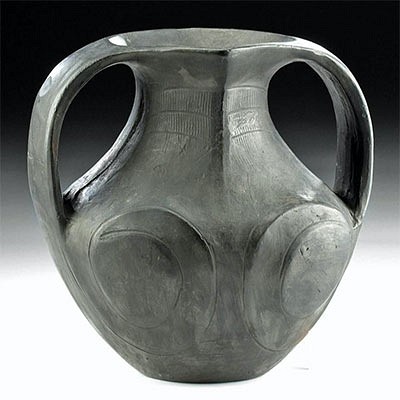1774 English Vellum Exemplification of Common Recovery
Lot 144
About Seller
Artemis Fine Arts
686 S Taylor Ave, Ste 106
Louisville, CO 80027
United States
Selling antiquities, ancient and ethnographic art online since 1993, Artemis Gallery specializes in Classical Antiquities (Egyptian, Greek, Roman, Near Eastern), Asian, Pre-Columbian, African / Tribal / Oceanographic art. Our extensive inventory includes pottery, stone, metal, wood, glass and textil...Read more
Categories
Estimate:
$400 - $600
Absentee vs Live bid
Two ways to bid:
- Leave a max absentee bid and the platform will bid on your behalf up to your maximum bid during the live auction.
- Bid live during the auction and your bids will be submitted real-time to the auctioneer.
Bid Increments
| Price | Bid Increment |
|---|---|
| $0 | $25 |
| $300 | $50 |
| $1,000 | $100 |
| $2,000 | $250 |
| $5,000 | $500 |
| $10,000 | $1,000 |
| $20,000 | $2,500 |
| $50,000 | $5,000 |
| $100,000 | $10,000 |
| $200,000 | $20,000 |
About Auction
By Artemis Fine Arts
Dec 16, 2021
Set Reminder
2021-12-16 10:00:00
2021-12-16 10:00:00
America/New_York
Bidsquare
Bidsquare : VARIETY SALE | Antiquities & Ethnographic Art
https://www.bidsquare.com/auctions/artemis-gallery/variety-sale-antiquities-ethnographic-art-8026
Featuring classical antiquities, ancient and ethnographic art from cultures encompassing the globe. Egyptian, Greek, Roman, Etruscan, Near Eastern, Asian, Pre-Columbian, Native American, African / Tribal, Oceanic, Spanish Colonial, Russian, Fossils, Fine Art, more! Artemis Fine Arts info@artemisfinearts.com
Featuring classical antiquities, ancient and ethnographic art from cultures encompassing the globe. Egyptian, Greek, Roman, Etruscan, Near Eastern, Asian, Pre-Columbian, Native American, African / Tribal, Oceanic, Spanish Colonial, Russian, Fossils, Fine Art, more! Artemis Fine Arts info@artemisfinearts.com
- Lot Description
Northern Europe, Great Britain, northern England, Yorkshire, ca. 1774 CE. An impressive vellum document detailing an exemplification of common recovery - the transfer of land held in fee tail to land held in fee simple - of 6 acres of land, 6 acres of pasture, and 6 acres of meadow between Thomas Wilson Clerk and Thomas Strangewanes. The fascinating document displays 33 lines of handwritten English in black ink with an extravagant header that reads "George the Third on the Grace of God" and ends with the footer of "Strangewanes." Each line features a double underline in red ink. A remarkable decoration of elaborate designs surrounds the top and sides of the piece, comprised of a portrait of George the Third within the G of his name, as well as many classical motifs of goddesses, male nudes, busts, lions, palmettes, and theatre masks. Size (document): 29.9" L x 23.9" H (75.9 cm x 60.7 cm); (frame): 30.4" L x 24.4" H (77.2 cm x 62 cm)
A stamp of King George the Third is shown on the verso, as well as an inscription listing the names of whom this exemplification of common recovery concerns.
The University of Nottingham describes a common recovery as "the product of a 'collusive action' - a fake legal procedure in the courts. The court was usually the Court of Common Pleas, but manorial courts could also deal with common recoveries. Common recoveries were used to break entails (conditions stipulated in wills or settlements which limited the descent of freehold land to certain individuals) and transfer land. Once the common recovery had been achieved ('suffered' in legal language), the land reverted to fee simple. This enabled it to be sold to somebody else, mortgaged, or settled in a new way." This practice was ended in the 19th century by the Fines and Recoveries Act of 1833, which allowed a simple deed of disentailment to be all that was required to break an entail.
While an exemplification of common recovery may not seem like the most riveting read to the modern viewer, one may note just how important the right to own property was in Early Modern Britain. Less than a century prior to this document, political philosopher John Locke wrote that all men were born with "natural rights" to "life, liberty, and estate" - a phrase that would be famously echoed in 1776 (just 2 years after the signing of our exemplification) when Thomas Jefferson penned that all men are "endowed by their Creator with certain unalienable Rights, that among these are Life, Liberty and the pursuit of Happiness" in the Declaration of Independence. The similarity of these 2 phrases has led some scholars to argue that the ownership of property could be equated to happiness within the Early Modern British / Colonial American mindset.
Provenance: ex-private Ventura County, California, USA collection
All items legal to buy/sell under U.S. Statute covering cultural patrimony Code 2600, CHAPTER 14, and are guaranteed to be as described or your money back.
A Certificate of Authenticity will accompany all winning bids.
PLEASE NOTE: Due to recent increases of shipments being seized by Australian & German customs (even for items with pre-UNESCO provenance), we will no longer ship most antiquities and ancient Chinese art to Australia & Germany. For categories of items that are acceptable to ship to Australia or Germany, please contact us directly or work with your local customs brokerage firm.
Display stands not described as included/custom in the item description are for photography purposes only and will not be included with the item upon shipping.
#164367Some folds and staining to vellum, as well as fading of ink in a few areas. Tearing with some loss to upper right corner and small perforation to top left area. Bottom is double folded and strung together with ribbon. Otherwise, excellent. Fit with modern frame.Condition
- Shipping Info
-
All shipping is handled in-house for your convenience. Your invoice from Artemis Gallery will include shipping calculation instructions. If in doubt, please inquire BEFORE bidding for estimated shipping costs for individual items.
-
- Buyer's Premium



 EUR
EUR CAD
CAD AUD
AUD GBP
GBP MXN
MXN HKD
HKD CNY
CNY MYR
MYR SEK
SEK SGD
SGD CHF
CHF THB
THB













